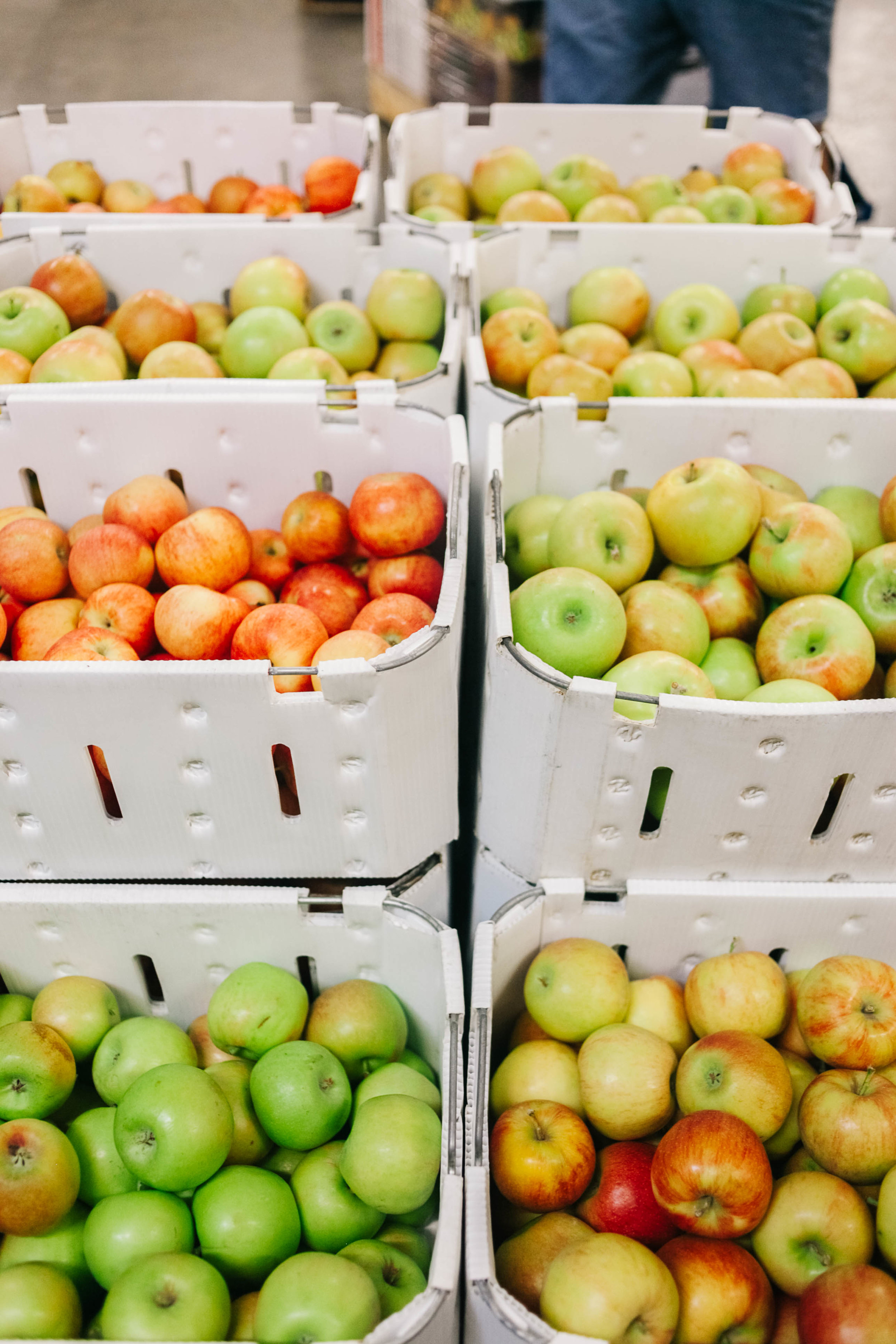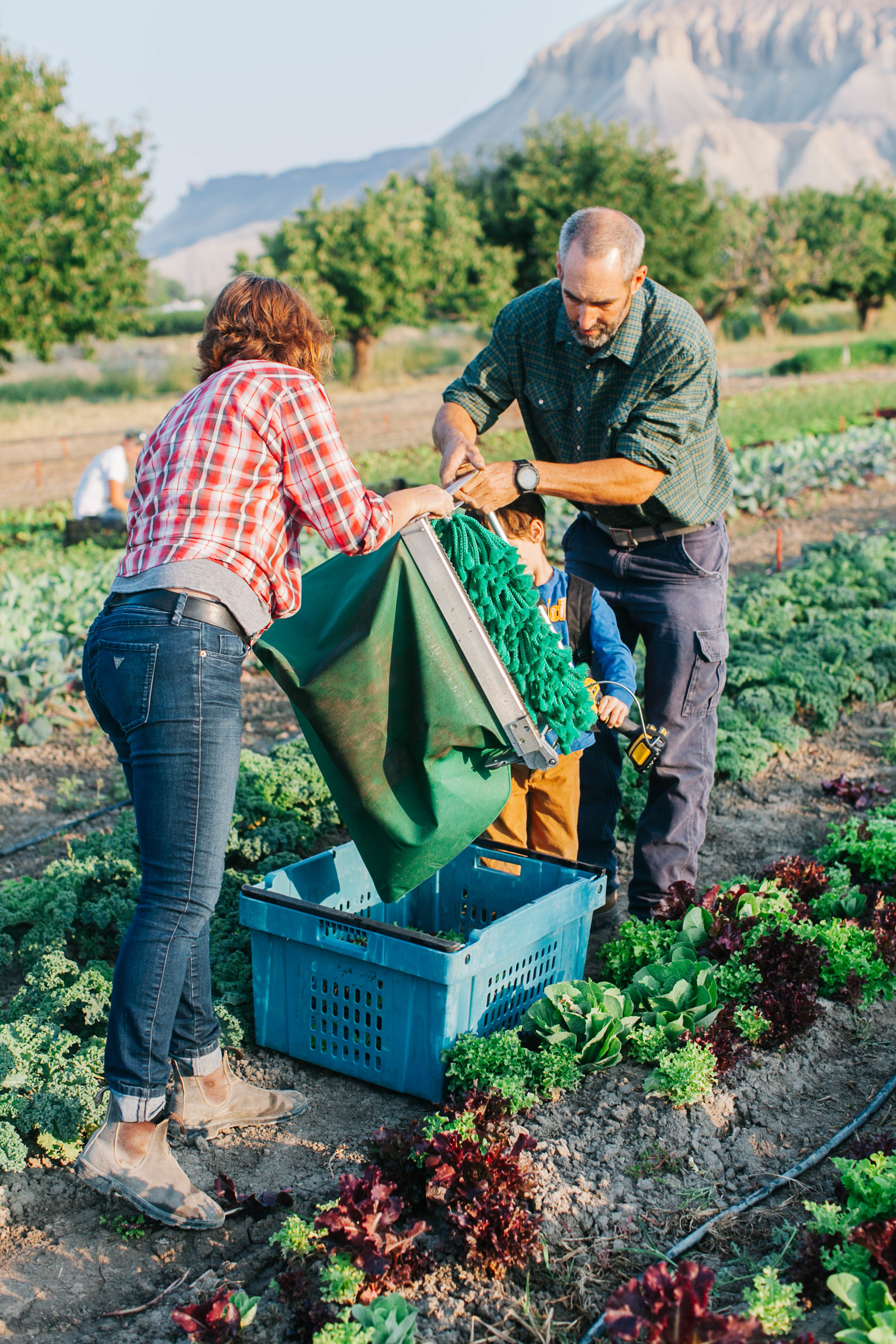D51: Fresh Approach to School Lunches
That old adage “you are what you eat” has been taken to task in recent years, although now a locally grown solution is taking hold here in western Colorado that could be a model for the nation.
Potentially severe health problems such as obesity, Type II diabetes—and an addiction to processed foods heavy in sugar and sodium—have sadly taken center stage among many doctors and other health specialists. As everyday lifestyles have turned increasingly hectic and more families require both parents spending large periods of time in the workplace, fast-food and processed-food options have become the easy way out.
Sadly, the proper feeding of children attending public school has not been immune to the same issues faced by busy families at home. Not helping this dilemma in recent years is the cold hard fact that public schools here in the Grand Valley and across the nation have felt the negative effects of shrinking food budgets, limited staff, and insufficient facilities to make any immediate changes.
Still, a growing recognition of the need to change the standards guiding exactly what students consume at lunchtime—and where and how their food is sourced—started several years ago when the federal government began a series of studies and, subsequently, began initiating a variety of wellness programs. Fortunately, District 51 in Mesa County began early to get a serious grip on the problem, and in recent years has developed a plan that encompasses not only changes in dietary provisions—but a partnership with local farms and orchards throughout the Grand Valley and western Colorado.
“It would have been easier to only change the food we purchased. We could have just focused on lower sodium and sugar content,” said Dan Sharp, director of Nutrition Services for District 51. Sharp came to the district 10 years ago, after spending several years working in high-end resort and restaurant guest services. But the transition to school nutrition priorties was easy for this family man. Five years ago, Sharp took on the challenge of having all 38 schools in the district evaluated by the Live Well Assessment.
After a year of evaluating, research, planning and improvements to D51’s facilities, the district was readied to join the Live Well Colorado School Food Initiative. Completed in 2012, the assessment set forth a plan of action to drastically change the way students were being offered food items—facilitated by a grant from the Colorado Health Foundation. The change was no small undertaking. It required a complete overall in both approach and process: switching from primarily processed food to a made-from-scratch program requiring a major re-write of the budget, the retraining of approximately 140 staff members, implementing the initial recipe, as well as the addition of no fewer than 35 on-site school kitchens.
During this massive transition to healthier student lunches, Sharp had begun to reach out to Mesa County farmers. By joining the Live Well Colorado School Food Initiative, D51 had committed itself to offering more whole grains, fresh fruit and vegetables to students with each meal. Sharp started by asking the question, “How do we make homemade food that kids will eat?” (Feeding approximately 10,000 students a day, he already knew the transition had to be executed with diligence, as well as require team work from the local community.)
As an added bonus to the sweeping changes already underway, Sharp also saw an opportunity to help local producers, as well. But the first challenge was to determine certain restrictions surrounding what entities can be used to “source” produce. Thus, the Valley Food Partnership—with the help of a competitive grant—stepped in and began working with local farmers in western Colorado. The partnership also helped local farms create on-site food safety plans—a previous hurdle that had prohibited local produce from making it to school lunchrooms. The grant signified a direct investment in the supply side of food provided to Mesa County schools.
“We couldn’t be more pleased to see the Western Slope area win the [grant] competition,” said Sarah Tyree, vice president of Government Affairs at CoBank, a national cooperative bank serving vital industries across rural America. “We’re confident the program will help them significantly expand the supply of local fruits and vegetables sold to their schools.” It turns out the Western Slope—known as “the fruit basket of Colorado”—was perfectly situated to win the grant.
While only two local producers met the qualifications to purchase produce initially, Sharp said nine local producers are being used today, and that number will continue to grow. His produce budget last year was $350,000, and about a third of his spending was for Colorado produce and services. Mesa County farmers received about $25,000 through D51 produce purchases, and Sharp said his goal is to increase the amount of locally-spent money yearly.
This investment could pay off for many years—in more ways than one. Ultimately, good nutrition has generally proven to increase test scores and school performance. The healthier the student, the better the student. “Nutritionally balanced food will help students perform more successfully. But it is about being good community partners as well,” Sharp added.
Today, the healthy difference prompted by this massive culinary transition for area students is easy to spot. Enter any D51 cafeteria around the noon hour and all the hard work and planning become immediately evident: Students are provided daily options that embody the farm-to-fork movement. To be both time-efficient and meet the new guidelines, “culinary managers” at each school spend several hours each morning washing, cutting and assembling salads from produce purchased from popular local operations such Field to Fork and Blaine’s Tomatoes.
Schools have also introduced salad bars in recent years—featuring local greens, grape tomatoes, and apples from Mesa County orchards–producing meals that are both healthy and inviting. This year’s menu includes such offerings as wheatberry salad, boasting locally grown green peppers and a light citrus dressing.
“One of the best things are the aromas that filter down the [school] hallways,” Sharp said. “The hope is that we help kids make changes that will impact their food choices for their entire lives. We want to make that effort now to initiate healthy lifestyles.”
D51 students themselves have been given the opportunity to gain “hands-on” experience, too, so to speak. participation. Last spring, more than a hundred students visited the Colorado State University Research Center in Mesa County where they helped plant vegetables at the site. Those same students recently returned to the center to help harvest their crops. Since the produce was distributed to local schools, some students are now enjoying cucumbers and other nutritious items that they themselves helped to grow.
Sharp says leading the way to healthier living—while creating a locally sourced, sustainable partnership with the local community—makes all the extra work worthwhile. By creating these partnerships, District 51 is forging its own case study of what hard work and sense-of-community together can accomplish.
For more information: www.ColoradoFarmtoSchool.org
Photo credit to Kaylan Robinson.





